
G292.0+1.8 in 3D
A Cataclysmic Explosion Frozen in Time
Supernova remnants are the debris from exploded stars. G292.0+1.8 is a rare type of supernova remnant that contains large amounts of oxygen. Located in our Milky Way galaxy (about 20,000 light-years away in the constellation Centaurus), G292.0+1.8 was created when a massive star ran out of fuel, collapsed under its own gravity.
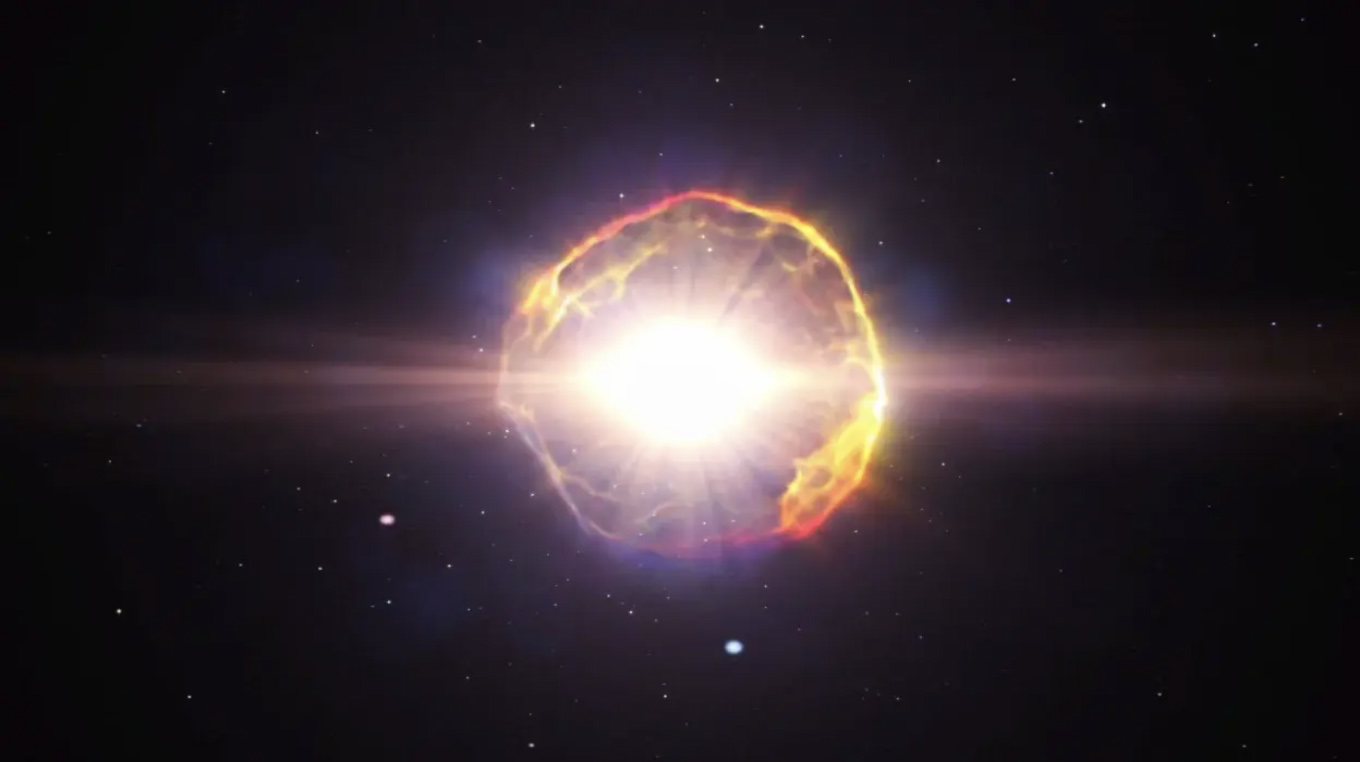
An artist’s illustration of a supernova, the cataclysmic death of a star that can leave behind a black hole or neutron star. Credit: NASA's Goddard Space Flight Center / ESA / Hubble / L. Calcada illustration
Because supernova remnants like G292.0+1.8 are one of the primary sources of the heavy elements (that is, everything other than hydrogen and helium) necessary to form planets and people, these oxygen-rich supernova remnants are important to study.
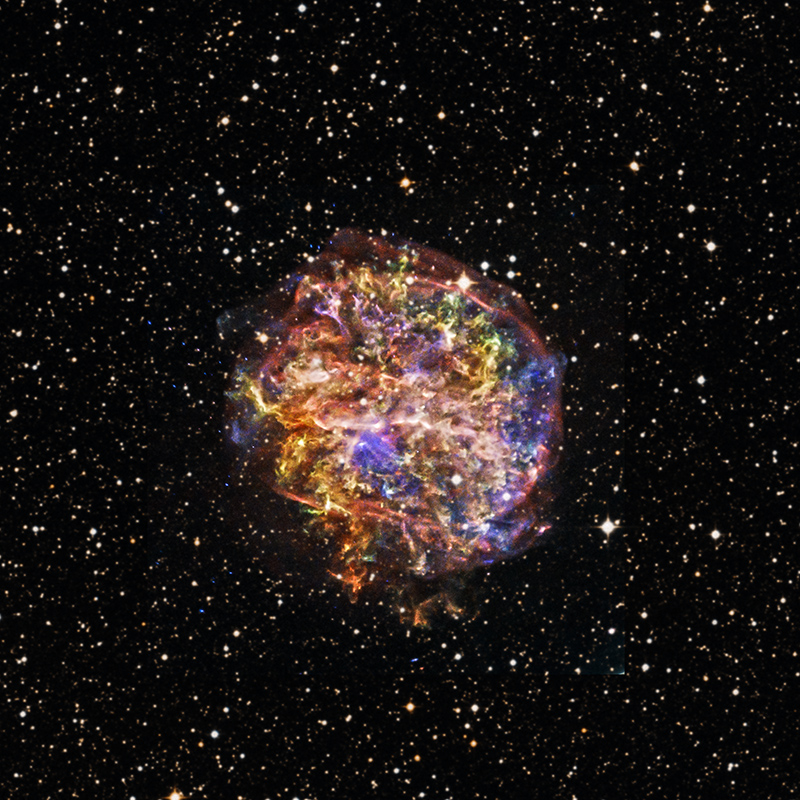
Astronomers believe that the G292.0+1.8 supernova remnant, one of only three in the Milky Way known to be rich in oxygen, was formed by the collapse and explosion of a massive star. Supernovas are of great interest because they are a primary source of the heavy elements believed to be necessary to form planets and life. This image from Chandra shows other important elements found in the stellar debris field including oxygen (yellow and orange), magnesium (green), and silicon and sulfur (blue) that were forged in the star before it exploded. Credit: X-ray: NASA/CXC/SAO; Optical:NSF/NASA/DSS; Image Processing: NASA/CXC/SAO/N. Wolk
The presence of oxygen and these other elements is a hint that the progenitor star (that is, the star that exploded) was many times more massive than our Sun. By carefully studying amounts of various elements in G292.0+1.8 and folding it into our knowledge of the physics of stars, we get a better understanding of the life cycles of massive stars and how they enrich the interstellar medium with the ingredients to form life as we know it.
This periodic table is color coded to indicate humanity’s best guess as to the nuclear origin of all known elements. The simplest elements, hydrogen and helium, are far and away the most abundant.
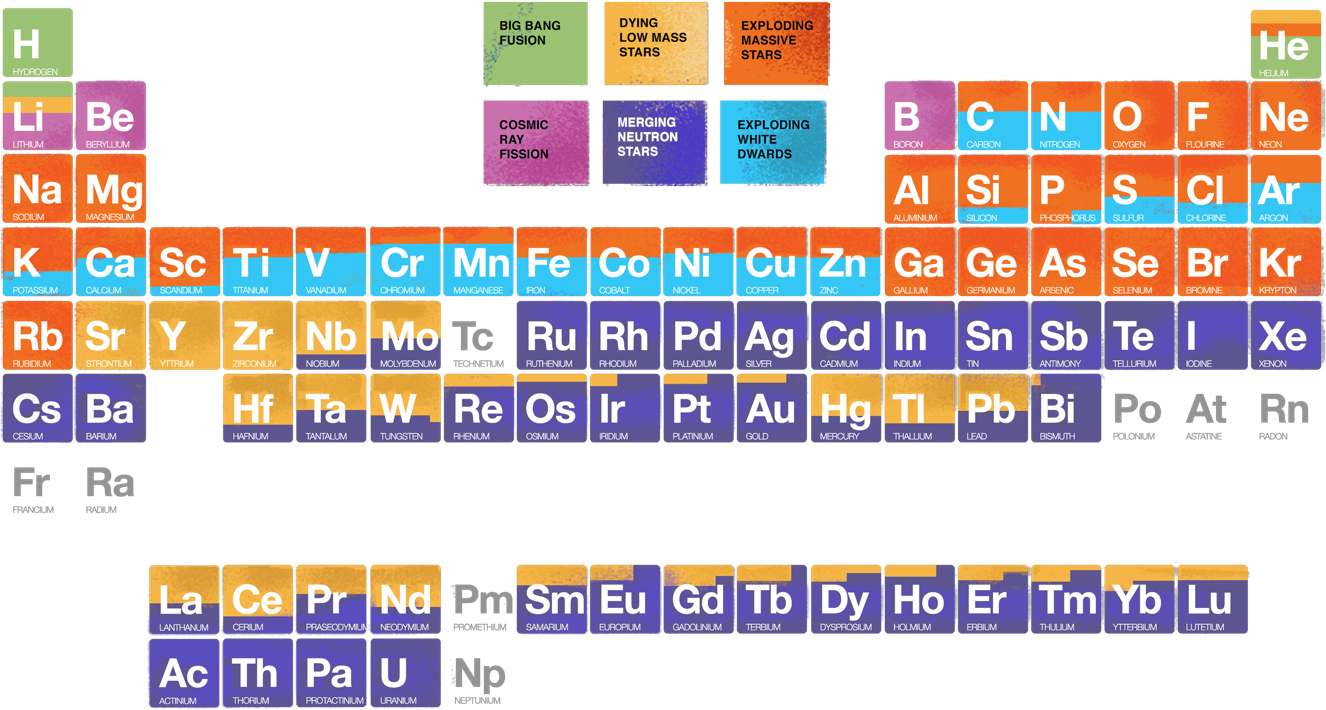
Credit: NASA/CXC/K. Divona; Reference: SDSS blog, J. Johnson
Discovery Across Different Kinds of Light
G292.0+1.8 was first identified in the mid-20th century through radio observations, which revealed a shell-like structure typical of supernova remnants. Later, observations with telescopes in visible light detected fast-moving knots of oxygen-rich material. This solidified its classification as a core-collapse remnant from a massive star. These oxygen-rich filaments, glowing in visible light, are rare and point to a particularly energetic and chemically significant explosion.
In more recent years, infrared observations from missions like NASA’s Spitzer Space Telescope have uncovered cooler dust and gas components within the remnant, offering clues about how supernova explosions interact with their surroundings and contribute to the recycling of material in the galaxy. Together, data across the electromagnetic spectrum—radio, optical, infrared, and X-ray from NASA’s Chandra X-ray Observatory—combine to give us a more complete picture of G292’s structure, origin, and impact on its environment.
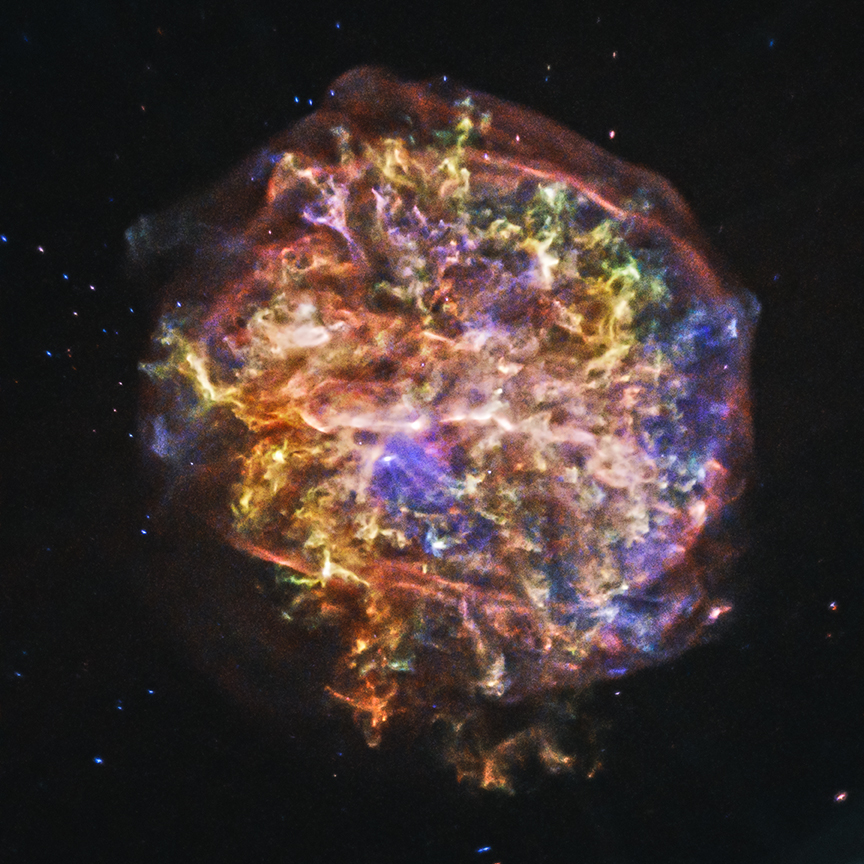
The color-coded X-ray image from Chandra shows a rapidly expanding, intricately structured, debris field that contains, along with oxygen (yellow and orange), other elements such as magnesium (green) and silicon and sulfur (blue) that were forged in the star before it exploded. Credit: NASA/CXC/SAO
A Stellar Forensics Case Study
Through observations with Chandra, scientists can peer into the high-energy processes at work within this remnant. Chandra reveals the distribution and intensity of different elements, showing where the blast wave has heated the surrounding material to millions of degrees. These X-ray views are complemented by the optical and infrared data, offering a multi-wavelength portrait of a complex and dynamic object.
One of the most intriguing features of G292.0+1.8 is its embedded neutron star—what’s left of the star’s core after the explosion. This neutron star, known as a pulsar because it’s spinning rapidly, emits jets of energetic particles. This also creates a feature known as a pulsar wind nebula, a bubble of high-energy particles that further sculpts the remnant’s interior. The presence of this pulsar confirms that a neutron star formed in the explosion and adds another piece to the puzzle of how these extraordinary remnants evolve.
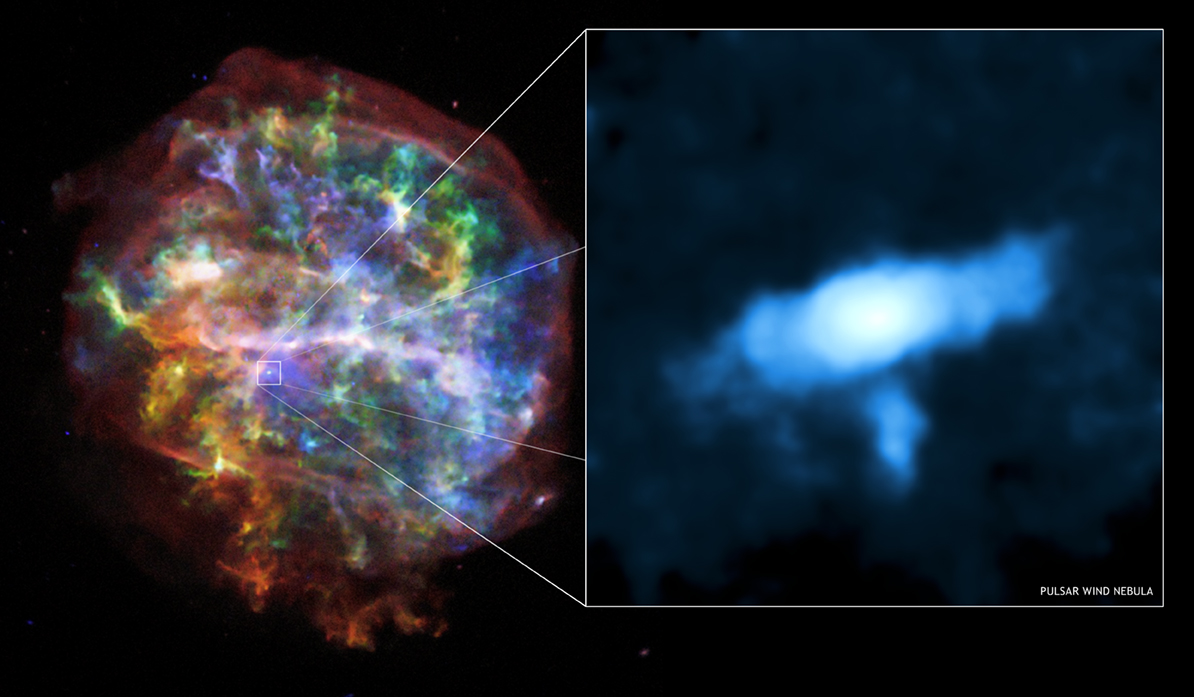
Chandra's image of G292.0+1.8 shows remarkable complexity and structure in the debris field of this exploded star. Each color represents different elements such as oxygen, neon, magnesium, and silicon. The distribution of these elements gives astronomers clues about how the star exploded. The close-up zooms into the region around the dense core that remains of the star, seen in the highest-energy X-rays detected by Chandra. Credit: NASA/CXC/Penn State/S.Park et al.
Exploring G292.0+1.8 in 3D
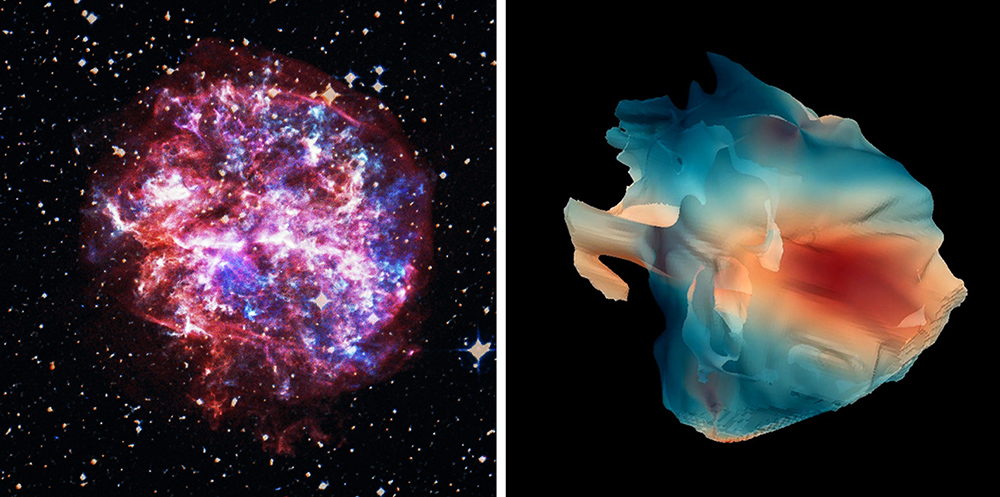
Caption: This is a rare type of supernova remnant observed to contain large amounts of oxygen. The X-ray image of G292.0+1.8 from Chandra shows a rapidly expanding, intricately structured field left behind by the shattered star. By creating a 3D model of the system, astronomers have been able to examine the asymmetrical shape of the remnant that can be explained by a “reverse” shock wave moving back toward the original explosion. Credit: 2D Image: X-ray: NASA/CXC/SAO; Optical:NSF/NASA/DSS; Image Processing: NASA/CXC/SAO/N. Wolk; 3D Model: INAF-Osservatorio Astronomico di Palermo/S. Orlando
The X-ray image of G292.0+1.8 from Chandra shows a rapidly expanding, intricately structured field left behind by the shattered star. By creating a 3D model of the system, astronomers have been able to examine the asymmetrical shape of the remnant that can be explained by a “reverse” shock wave moving back toward the original explosion.
The colors in this model show the ejecta toward Earth from a supernova explosion such as G292 moving toward the viewer (blue) and away (red). Astronomers have interpreted the asymmetry of the supernova remnant as being the result of some lopsided property of the explosion itself, leading to this shape some 2,000 years later.
The shape and surface of the model represent the physical structure of the remnant as traced by X-ray emissions. While not to exact scale, the model captures the spatial relationships and asymmetries of the expanding debris cloud, providing a concrete way to understand these distant cosmic phenomena.
3D Printing G292.0+1.8: Download the 3D Model
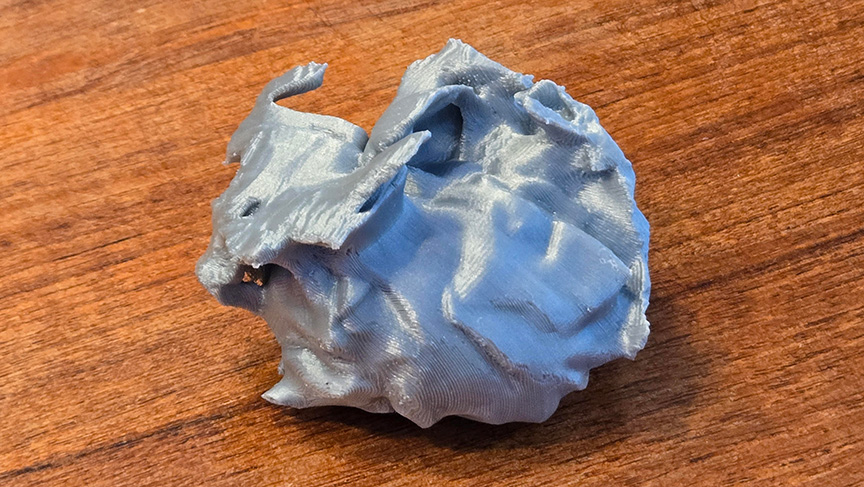
The G292.0+1.8 supernova remnant is revealed to be somewhat like a bulbous arrowhead in this 3D print.
3D Print Credit: NASA/CXC/SAO/A. Jubett & N. Wolk, based on a model by S.Orlando
These files are compatible with most 3D modeling software and printers.
Printing Recommendations
To create your own version of supernova remnant G292.0+1.8:
Printer Type: FDM (fused deposition modeling) or SLA (stereolithography) printers are both suitable.
Material: PLA filament for general use, or resin for finer detail.
Layer Height: 0.06 mm recommended for optimal resolution, 0.1 mm acceptable.
Supports: Recommended due to the remnant’s complex contours and overhangs.
Scale: Best at 4 inches (10.16 cm) in largest axis for detail.
Print a 3D Plate of G292.0+1.8
Supernova remnant G292.0+1.8 is also available as a 3D printable plate. The G292 plate is a physical relief map based on the intensity of the X-ray data captured by NASA's Chandra X-ray Observatory and Optical data from DSS. The composite image depicts the remnant as a bumpy and intricate ball of X-ray gas and debris set against a backdrop of bright stars. The G292.0+1.8 supernova remnant contains a pulsar moving at over a million miles per hour. Pulsars are rapidly spinning neutron stars that can form when massive stars run out of fuel, collapse, and explode. Sometimes these explosions produce a “kick,” which sent this pulsar racing through the remains of the supernova explosion.
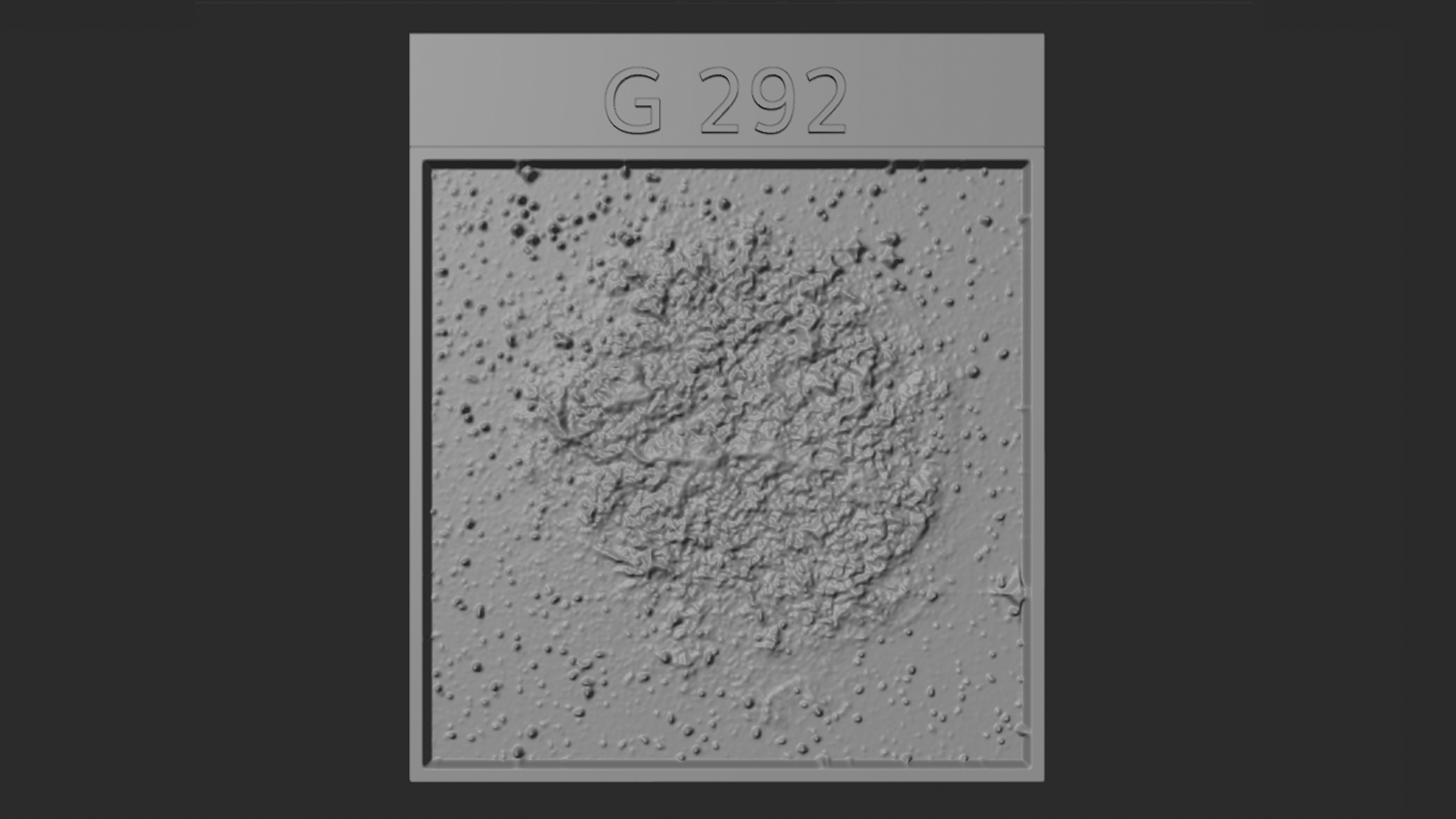
3D Print Credit: NASA/CXC/A. Jubett, using software by Tactile Universe/N. Bonne & C. Krawczyk & Blender
Learn More
G292.0+1.8 is part of a growing library of 3D printable astrophysical objects developed using NASA and other astronomy data and mathematical models. These models are designed to make cutting-edge science more accessible, helping lifelong learners mentally map and understand the fundamental processes that shape our universe.
Explore more exploded stars, neutron stars, and other objects in 3D
RESOURCES
DOWNLOADABLES
LINKS TO OTHER ACTIVITIES
Published: May 2025





